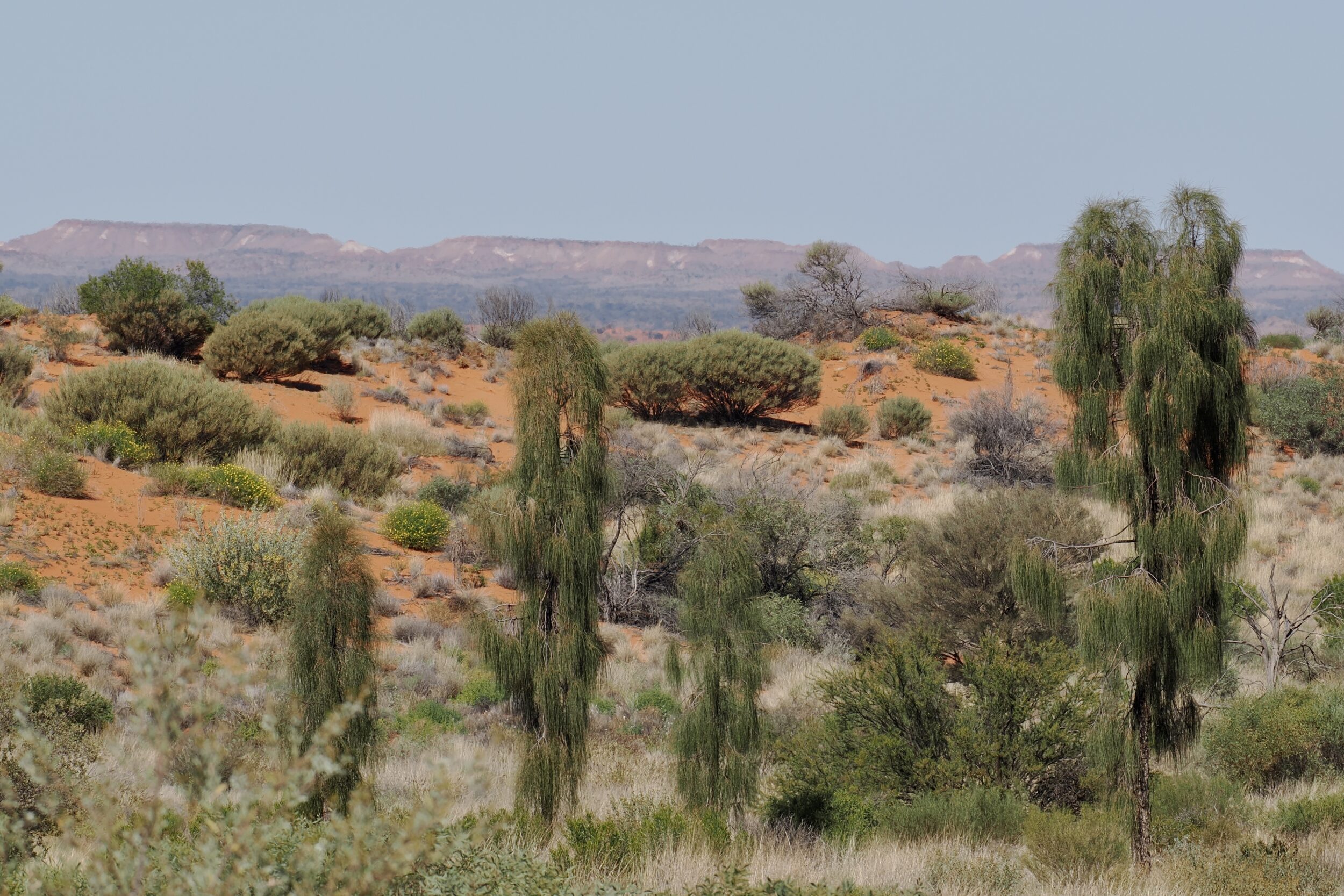By their very nature, sandy soils are “poor” – low in nutrients and unable to retain much moisture.
Yet in some places where rain often falls and the sun often shines – including some of Amazonia and parts of the world’s largest sand island – rainforest flourishes.
That island is Australian. (Queensland’s Fraser Island/K’gari)
So too is this post’s sandy, “desert” location, which is circa 900 kilometres distant from any ocean’s shore.
Even an ignoramus would never mistake the Simpson Desert for rainforest, but s/he would almost certainly be hugely surprised to discover just how beautifully vegetated is so much of it. (as are a great many other sandy, “arid” Australian places)
This post’s photos were both taken in the middle of a winter’s day, circa 160 kilometres south of Alice Springs, in Chambers Pillar Historical Reserve.
The Reserve is named for its dramatic sandstone pillar which rises some 50 metres above its surrounds, and is readily visible from remarkably far away, in every direction.
I have no idea how old are the sand grains in the Simpson Desert’s parallel dunes, but Chamber’s Pillar’s sandstone is generally reckoned at circa 350 million years.
The young, slender, shaggy-candle-like trees in the featured image are members of the very same species as is the mature, very much bigger, hugely wider tree which dominates the other photo.

So-called “desert oaks” are not at all closely related to the Northern Hemisphere’s oak trees.
They are members of the family Casuarinaeace, commonly known as “she-oaks” or “sheoaks”.
Once considered a single genus, this family now has two: Casuarina and Allocasuarina.
The latter genus is endemic to Australia.
Arguably, Allocasuarina decaisneana – the desert oak – is its loveliest member.
Desert oaks naturally occur only in central Australia, most especially in swales between red sand dunes in the southern part of the Northern Territory.
Their seed-bearing cones are the largest of any Allocasuarina species.
So dramatically different are their juvenile and adult forms that many tourists fail to recognise that they are looking at different stages of the same tree, rather than two entirely different species.
A factual overview is here.
I urge you also to read this more detailed, lyrical appreciation of a living icon of outback Australia.
Unsurprisingly, the desert oak has for many thousands of years been of particular importance to outback Australia’s indigenous people.
To the Aṉangu it was kurkara – and a vital source of both water and wood.
